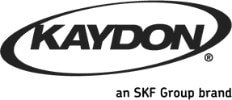
Future-Proof Your SEO with Predictive Analysis
In the rapidly evolving digital landscape, staying ahead of the curve is essential for businesses looking to maintain their competitive edge. SEO (Search Engine Optimization) has always been a cornerstone of digital marketing, but the integration of predictive analysis in SEO is transforming how marketers approach it. We are going to discuss the synergy between predictive analysis and SEO, exploring how businesses can leverage these technologies to enhance their online visibility and drive more targeted traffic from search engines for free.
What is Predictive Analysis and How Does It Benefit SEO?
Predictive analysis is a technique that utilizes historical data, machine learning, and statistical algorithms to forecast future outcomes. In the realm of SEO, predictive analysis involves examining past user behaviors, search patterns, and other relevant data to anticipate future trends and behaviors.
This proactive approach allows marketers to optimize their content and website structures based on data-driven insights rather than mere speculation. By understanding what users are likely to search for and how they will behave, businesses can tailor their SEO strategies to capture emerging opportunities, improve their search engine rankings, and ultimately drive more targeted traffic to their sites.
The use of predictive analysis ensures that SEO efforts are not only reactive to current trends but also strategically aligned with future developments, providing a significant competitive advantage.
Understanding Predictive Analysis in SEO
Predictive analysis in SEO uses historical data, machine learning, and statistical algorithms to predict future outcomes. In the context of SEO, it involves analyzing past user behaviors and search patterns to anticipate future trends and behaviors. This allows marketers to create more informed strategies, optimizing their content and website structures to meet the anticipated needs of their audience.
Key Components of Predictive Analysis in SEO:
- Data Collection: Gathering data from various sources such as website analytics, social media interactions, and search engine results. Consider Google Search Console in addition to Google Analytics.
- Machine Learning Algorithms: Utilizing algorithms to identify patterns and correlations in the data. For example, a common machine learning algorithm used in predictive analysis is the decision tree algorithm. Decision trees model decisions and their possible consequences, including chance event outcomes and resource costs. They help in predicting the value of a target variable based on several input variables, making them useful for identifying which factors most affect SEO performance and user behavior.
- Statistical Analysis: Applying statistical methods to forecast future trends and user behavior.
- Continuous Monitoring: Regularly updating predictions based on new data to refine strategies over time.
The Role of Predictive Analysis in SEO
Predictive analysis enhances several aspects of SEO, making it more proactive and less reactive. Here are some critical areas where predictive analysis is making a significant impact:
- Keyword Optimization: Traditional keyword research focuses on current trends and competitor analysis. Predictive analysis, however, enables marketers to identify keywords that are likely to gain traction in the future. By optimizing content for these emerging keywords, businesses can capture traffic before their competitors even recognize the trend.
- Content Strategy: Predictive analysis helps in crafting a content strategy that aligns with future user interests. By understanding what topics are likely to become popular, marketers can create content that resonates with their audience and meets their future search intent. This forward-thinking approach ensures that content remains relevant and valuable over time.
- User Experience (UX) Improvements: Predictive analysis can identify potential user experience issues before they become problematic. By analyzing user behavior patterns, businesses can anticipate areas where users might encounter difficulties and make preemptive adjustments to improve navigation, load times, and overall usability.
- Competitive Analysis: Keeping an eye on competitors is crucial in SEO. Predictive analysis in SEO allows businesses to forecast competitors’ strategies and movements. By anticipating their next moves, companies can adjust their tactics to stay one step ahead, ensuring they maintain or improve their market position.
Predictive analysis in SEO is revolutionary by enabling a proactive approach to keyword optimization, content strategy, user experience improvements, and competitive analysis. By leveraging historical data and machine learning algorithms, marketers can anticipate trends and user behavior, ensuring their strategies are always ahead of the curve.
This forward-looking method not only enhances search engine rankings but also provides a better user experience, ultimately driving more targeted traffic and higher conversion rates. As the digital landscape continues to evolve, predictive analysis will become an increasingly essential tool for maintaining a competitive edge in SEO.
Implementing Predictive Analysis in SEO Strategies
To effectively integrate predictive analysis into your SEO strategy, follow these steps:
- Gather and Analyze Data: Collect data from various sources, including Google Analytics, search engine data, social media insights, and third-party tools. Use this data to identify patterns and trends that can inform your SEO strategy.
- Leverage Machine Learning Tools: Utilize machine learning tools like Google’s TensorFlow, IBM Watson, or other AI-powered platforms to analyze data and make predictions. These tools can process vast amounts of data quickly and provide actionable insights.
- Create a Predictive Model: Develop a predictive model tailored to your business needs. This model should include key variables such as search volume trends, user behavior metrics, and competitor activity. Regularly update the model with new data to refine its accuracy.
- Implement and Monitor: Apply the insights gained from predictive analysis to your SEO strategy. Optimize your content, adjust your keyword focus, and improve your website’s UX based on the predictions. Continuously monitor the performance and adjust your tactics as needed to stay aligned with the evolving trends.
- Refine and Repeat: Predictive analysis is an ongoing process. Regularly refine your models and strategies based on the latest data and trends. This iterative approach ensures that your SEO efforts remain dynamic and effective.
To effectively integrate predictive analysis into your SEO strategy, follow these steps: gather and analyze data from multiple sources, leverage machine learning tools for deep insights, create a tailored predictive model, and continuously monitor and refine your approach based on the latest data.
This iterative process ensures that your SEO efforts are dynamic and responsive to evolving trends, ultimately driving better search engine performance and user engagement. As predictive analysis becomes more sophisticated, its role in SEO strategies will only grow, making it a crucial component for digital marketing success.
Case Studies and Examples
Example 1: E-commerce Website:
An e-commerce site used predictive analysis to anticipate a surge in searches for eco-friendly products. By optimizing their content and product listings for keywords related to sustainability, they experienced a significant increase in organic traffic and sales, well ahead of their competitors who were slower to adapt. Source: A Predictive Analytics Model for E-commerce Sales Transactions to Support Decision Making: A Case Study
Example 2: Blog on Technology Trends:
A technology blog used predictive analysis to identify upcoming trends in AI and machine learning. By publishing detailed articles on these topics before they became mainstream, the blog attracted a substantial readership and established itself as a thought leader in the industry. Source: How AI Predictive Analysis Is The Crystal Ball of Marketing
Challenges and Considerations
While predictive analysis offers numerous benefits, it’s not without its challenges. Some considerations include:
- Data Quality: The accuracy of predictive analysis heavily depends on the quality of the data. Incomplete or inaccurate data can lead to incorrect predictions, which can adversely affect your SEO strategy.
- Algorithm Complexity: Implementing machine learning algorithms requires technical expertise. Businesses may need to invest in training or hire experts to develop and maintain predictive models.
- Adaptability: The digital landscape is constantly evolving. Predictive models must be adaptable and regularly updated to remain effective. This requires ongoing effort and resources.
Despite these challenges, the potential benefits of predictive analysis for SEO far outweigh the difficulties. By addressing data quality issues, investing in the necessary expertise, and maintaining flexibility in their predictive models, businesses can harness the power of predictive analysis to gain a competitive edge. Embracing these challenges as opportunities for growth will enable companies to optimize their SEO strategies more effectively, ensuring sustained success in the ever-evolving digital landscape.
The Future of Predictive Analysis in SEO
The integration of predictive analysis into SEO is still in its early stages, but its potential is vast. As machine learning algorithms become more sophisticated and data collection methods improve, predictive analysis will become an indispensable tool for digital marketers. By staying ahead of trends and anticipating user needs, businesses can maintain a competitive edge and drive sustained growth in their online presence.
In conclusion, predictive analysis is transforming SEO from a reactive practice to a proactive strategy. By leveraging historical data, machine learning, and statistical algorithms, businesses can anticipate future trends and optimize their digital presence accordingly. The key to success lies in continuous monitoring and adaptation, ensuring that SEO strategies remain dynamic and aligned with evolving user behaviors and market trends.
Stay Ahead of Competitors with AI-Driven Marketing
The future of marketing is here, and it’s powered by AI.
Are you ready to lead the charge?
Learn how SmartFinds Marketing can transform your marketing strategy and drive unprecedented growth for your business.
Schedule a meeting with our consultant Alex to get started today.
Author: Melih Oztalay




















